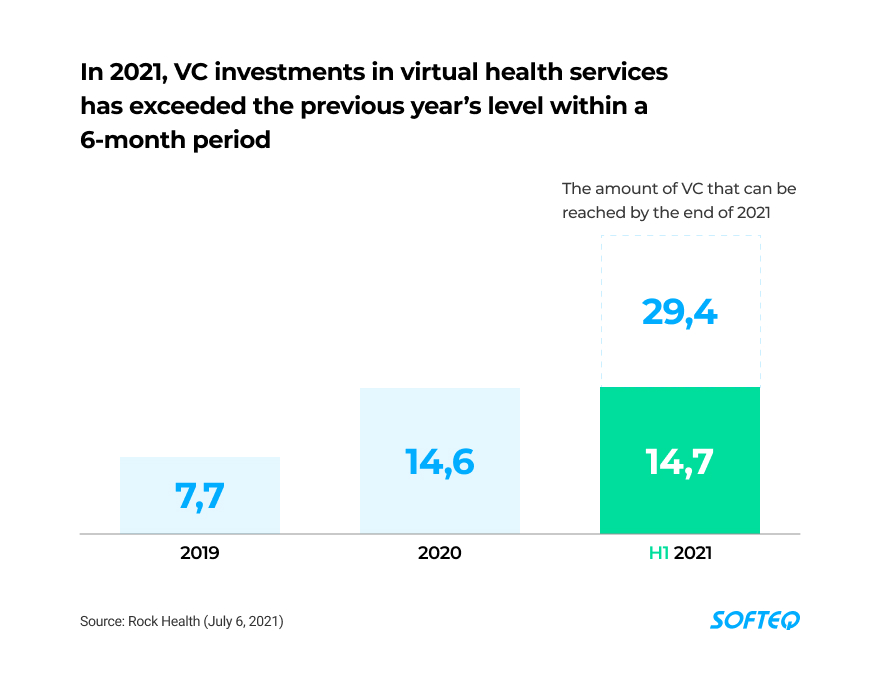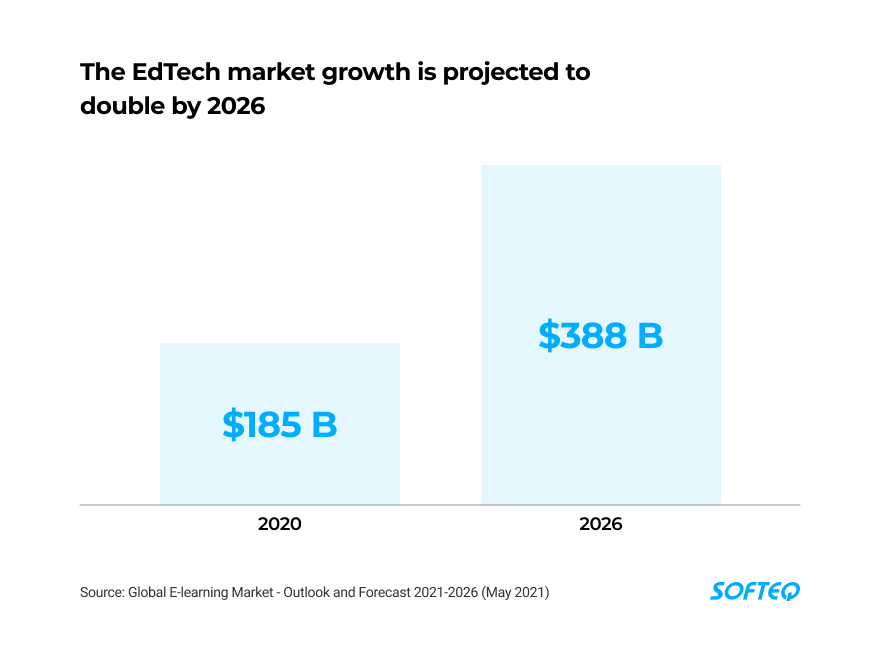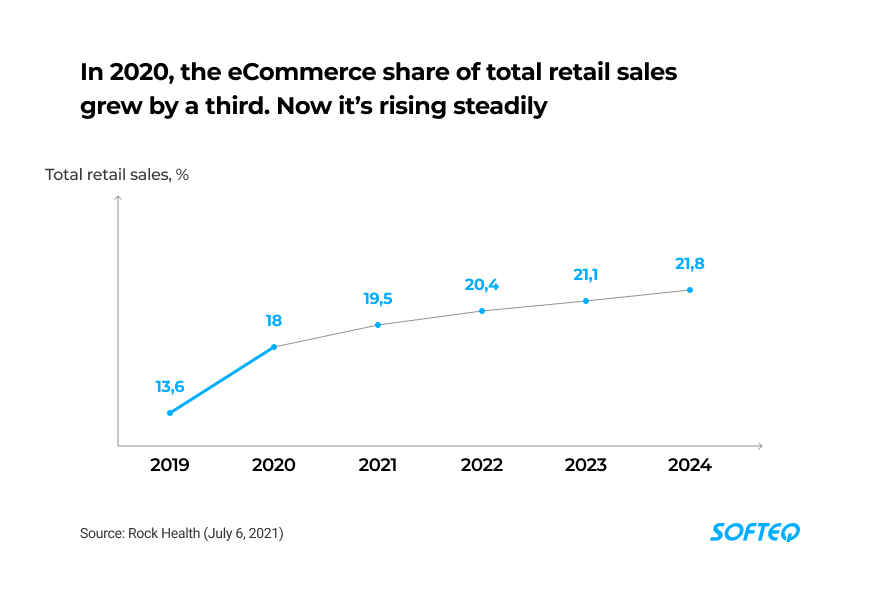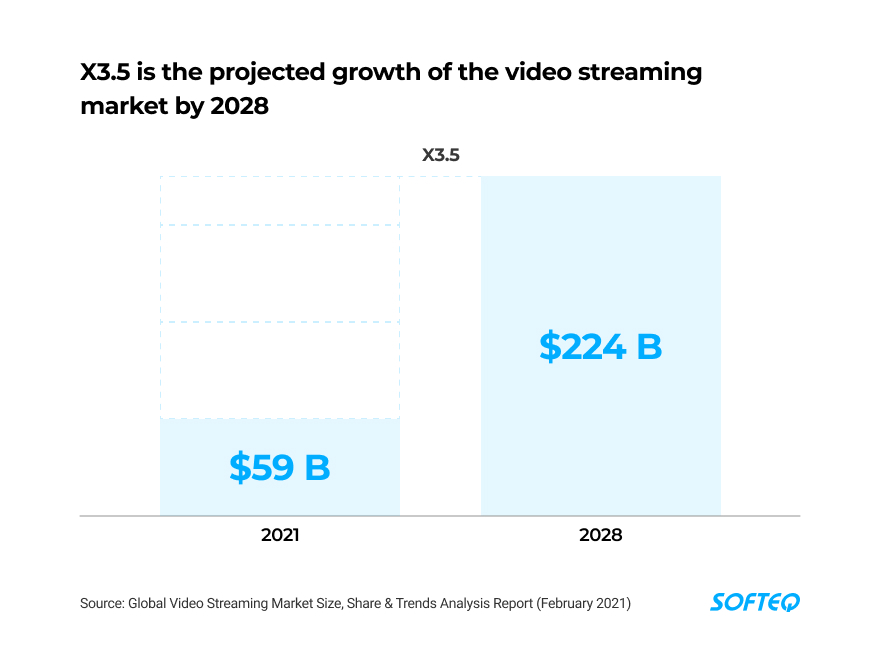Top 5 Most Prospective Industries for In-Memory Database Technology

Table of Contents
Self-isolation, remote working, and home entertainment are motivating customers to go online with every request. In its turn, that motivates businesses and services to go digital, highly personalized, and seamlessly integrated into everyday routine.
So, here are five industries with their newest challenges and solutions that in-memory databases can offer.
New Habits Transform Businesses
Everyone is going digital
Companies from different industries are quite sure that customers will still prefer meeting their needs with the help of online services even after the end of the pandemic. This motivates businesses to increase their digital investments by 10%–30%.
Online consumption grows
Consumers shift away from brick-and-mortar stores to online retailers. Thus, retailers cut the number of physical locations. This means focusing on delivery services, including contactless delivery with drones and robots.
Digital healthcare remains on the radar
The digital health market is expected to reach $386B by 2025. Consumers say that they’ll continue using virtual health services extensively, including mental health coaching and video-based medical consultations. The government is also changing its approach to telehealth with new regulations, making it more accessible. This motivates healthcare institutions and IT developers to launch new virtual solutions.
Remote working reveals new needs
One out of every two employees says they prefer working from home after the pandemic ends. This trend involves big changes for work process automation. The real estate sector will also be affected: it will be getting more flexible and ‘smart’.
Entertainment will stay virtual
Home entertainment services are growing at 21% CAGR – one of the highest rates among all industries. So, the battle between streaming platforms will continue, and further development of the online gaming industry and growth of eSport—are guaranteed.
So, businesses and services have no choice but to respond to widespread digitalization and a growing number of online users.
For IMDBs it means new opportunities. Let’s see it in detail.
Industry 1: Healthcare
Value
IMDB technology empowers digital healthcare platforms since it can cope with any number of queries.
How It Can Meet Different Challenges
- Growing volume of high-bandwidth video traffic
In-memory database technology can adjust capacity and scale computing and storage resources for better speed and lower costs.
- Wider use of wearables and other health monitoring tech
An IMDB receives and stores a continuous stream of data from hardware used for continuous and remote diagnostics. It can be quickly retrieved from the in-memory storage. When an IMDB works with complex data structures, it provides improved indexing and search capabilities.
- A fast-growing store of EHRs and EMRs
An IMDB serves as a data cache and messaging broker that gives applications fast access to data.

Industry 2: EdTech
Value
IMDBs perform reliably during peak traffic and scale down automatically during holidays or on-campus learning.
How It Can Meet Different Challenges
- Need for handling concurrent requests
An IMDB provides quick access to multiple students simultaneously as it guarantees concurrent query processing.
- Different work periods
An IMDB can scale clusters up, down, and out without having to overprovision infrastructure that won’t be used during slower periods.

Industry 3: eCommerce
Value
IMDB caching tools and fast performance support quick page load time, fast response, scaling up and down upon request, and personalized services.
How It Can Meet Different Challenges
- Need for an instant reply and fast ordering
An IMDB’s caching tools take the load off memory by caching heavy content like images, video files, etc.
- Shoppers’ demands for a personalized experience
To understand and influence user behavior, an IMDB uses the caching layer to better manage session data like user profiles, their preferences, and search history. Also, it keeps it updated and available for real-time recommendations.
- Need for recreating strong and diverse supply chains
An in-memory database supports real-time inventory systems. It provides high availability and super-fast database performance at peak traffic while reducing delays in opening menus or loading inventory. Also, an IMDB ensures data consistency across multiple channels.

Industry 4: Digital Media & Streaming
Value
IMDBs help OTT and media platforms scale up and down in an instant and stream video content during periods of high demand with no loss in quality.
How It Can Meet Different Challenges
- Traffic spikes
Video streaming applications rely on IMDBs as they are extremely fast to retrieve messages from an in-memory data grid, without disk overhead.
- Need for handling failure
Streaming services rely on a microservices architecture that makes developers address numerous failure modes. An IMDB helps enable fast failover, database recovery, and node restarts.

Industry 5: Online Gaming
Value
IMDBs ensure the fastest response time in multi-player games.
How It Can Meet Different Challenges
- Vast amounts of data
An IMDB ensures the quickest response time even for online games with millions of concurrent players. It uses caching, scoring, and predefined indexing to process large volumes of data, constantly updating them, to ensure a quick launch and immediate connection to a server.
- A heavy workload
When a new feature is released or when a game goes viral, an IMDB helps handle jagged traffic and changing workload on the system by increasing or decreasing the size of the cache cluster.
- Use of responsive game elements
Advanced IMDBs use multiple complex data structures. It makes them quick to work with different elements: leaderboards, videos, thumbnails, etc.

Bottom line
In-memory databases have been around for a while. But it looks like their time has come.
In-memory databases are the first when it comes to:
- Handling a growing number of users;
- Processing concurrent queries;
- Storing an increasing amount of data.
These capacities make them a perfect match for the most dynamically developing industries: telehealth, eCommerce, distance learning, video streaming, and online gaming.
Contact Softeq experts today to learn what projects we can release together with an IMDB in place.
More articles on the topic

![[Webinar] T-Winning Strategies: How Digital Twins Drive Innovation & Efficiency](https://www.softeq.com/hubfs/Digital%20Twins%20Webinar.png)




